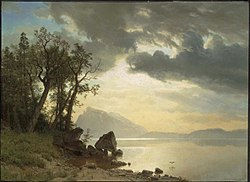Her Crowning Glory
- Cheryl Anne Stapp

- Dec 7, 2022
- 2 min read

In July 1849, as hordes of gold-rushing men were swarming into California, a French hairdresser arrived in San Francisco and immediately advertised his services “to the ladies and gentlemen of the city” although, so far, only a trickle of women were present. Nonetheless this was, after all, the Victorian Age, and what Bernard Viellefon knew, and intended to profit from, was that the western world considered a woman’s hair to be her crowning glory.
Throughout Europe and America, women were expected to grow their hair to great lengths, starting in girlhood. Hair down to the waist was fairly common; hair that reached the ankles was rare—but not impossible. Hairstyles were elaborate, and—because the Victorian Age lasted for almost seven decades—changed slightly about every ten years.
Throughout the era—after age 16 or so—milady’s tresses were always worn upswept in whatever style was currently fashionable. Indeed, being allowed to wear one’s hair “up” above the neck marked a girl’s coming of age, signaling that she was eligible to receive gentlemen callers. Bulk was important, as abundant hair was considered a sign of beauty, yet the shape of the coiffure had to be suitable for partial concealment beneath a variety of hats and bonnets.
Early styles were parted in the middle with curls at the side. By mid-century, hair was tied at the back of the neck in a low bun or a cluster of loops, braids, twists, or curls. Coils of ribbon, headbands across the forehead, and hanging strips of lace or muslin secured to the top of the head, called lappets, were popular. Later on, fashionable women pulled their hair back, framing their faces with tiny curls. Unfortunately the first curling irons, which looked much like today’s gardening shears, were invented before electricity was in use. Heated over gas burners, these devices fried many a ladies’ hair into uncontrollable frizz. The Gibson Girl look came into vogue in 1890, with its fuller, more casually arranged up-do.
The secret to holding hair up-do’s in place was hairpins: thin, u-shaped, flexible crimped wire that could hold hair if enough were used, and meant to be hidden. Combs, on the other hand, meant to be visible, tended to be large and decorative, elaborately carved or covered with jewels. Intricate hair styles were aided by rolling hair overnight in lengths of cloth, but quite often a woman’s own hair, however long, wasn’t enough. Additional hairpieces of braids or fancy ringlets were available for purchase and widely used. Other hair ornaments, such as feathers and flowers, were worn to complement formal evening wear.




Comments